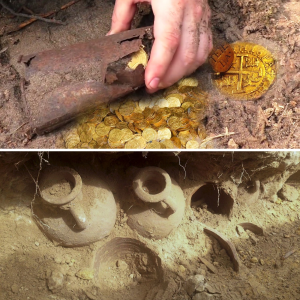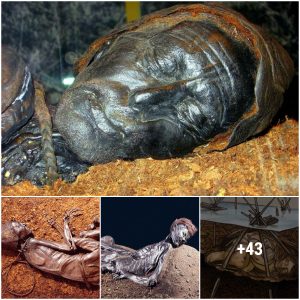An ancient burial mound excavated in Siberia was found to contain 50 bodies and numerous bronze tools and artifacts. This exciting discovery belongs to an as-yet unidentified culture.
Krasnoyarsk is a Siberian city on Russia’s Yenisei River, and is the country’s second-largest city after Novosibirsk. In the autumn of 2021, excavators bulldozed a small hillock during the expansion of the 19th century Shinnoye cemetery, and unearthed a massive 2,000-year-old tomb with bronze artifacts belonging to “a newly identified culture.”
This summer, Dr. Dimitry Vinogradov, from the Siberian Federal University, led a team of archaeologists who excavated the site. Haaretz reports that the hill was in fact a 2,000-year-old ancient burial mound created by an unknown “Scythian-type culture.”
Cutting Open the 2,000-Year-Old Box Tomb
Over the last hundred years, around 150 ancient burial mounds have been identified around Krasnoyarsk, but this is the first one to be excavated in 65 years. While the bulldozing damaged a lot of the artifacts within the mound, the team of researchers referred to historic photographs, which determined it originally measured about 100 feet (30 meters) in diameter.
Dr. Vinogradov explained that when the bulldozer peeled back the top of the mound, it damaged the upper part of the tomb, and at the same time it revealed a large rectangular pit. The lost tomb was lined with timber walls and a birch bark carpet. It is suspected that the top of the tomb was also wooden and that the whole formed a “box tomb”.
- Surprising Truths about the Legendary Scythians Revealed
- Unique Late Scythian Necropolis Tells of Demise and Transition
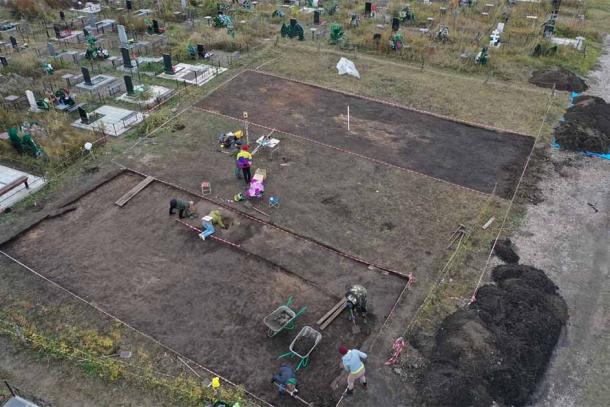
Aerial view of the excavation site of 2,000-year-old tomb, next to Shinnoye cemetery, Krasnoyarsk, Russia (Dimitry Vinogradov / Haaretz)
Stags, Felines, Birds of Prey and Griffons
Built for around fifty people, the team of archaeologists unearthed a host of day-to-day tools from within the tomb, as well as sacred artifacts and weapons that the deceased would have utilized on their journeys into the afterlife. Knives, mirrors, needles, and ceramic eating and drinking vessels were strewn among “miniature symbolic bronze daggers and battle axes.” Furthermore, large bronze beads and plaques were unearthed, with one of the latter depicting a stag, which the lead archaeologist says is a popular motif in ancient Siberian Scythian arts .
- The Royal Kurgan of Kerch: The burial mound built by a king
- The Bronze Age Srubna Culture and their Unique Timber Graves for the Dead
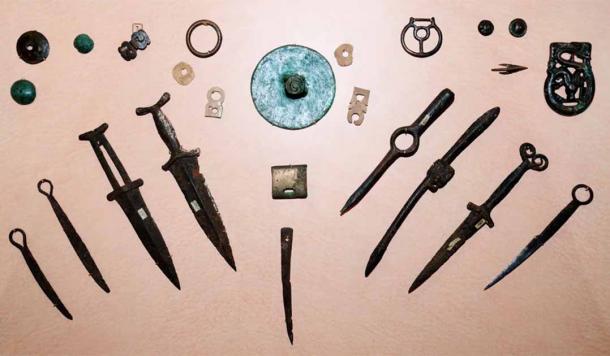
A variety of bronze tools and artifacts were recovered from the 2,000-year-old tomb, belonging to an as-yet unidentified Scythian culture (Dimitry Vinogradov / Haaretz)
The primary reason the tomb is being associated with “an unknown Scythian culture” is because the term Scythian doesn’t refer to any one thing. Vinogradov explained that the term Scythian refers to a triad of Iron Age archaeological features including “certain styles of bronze weaponry ; horse-riding gear; and art featuring real and mythical animals – mainly stags, wild felines, birds of prey and mythical griffons”.
Once Filled With Bodies, “It Was Left To Burn”
Dr. Vinogradov suggests that with around fifty bodies having been discovered inside this one tomb it was most probably “a family tomb,” that was used by several generations. The color of the soil within the mound suggests the site was exposed to high temperatures. The researchers suspect that when the tomb was filled with bodies and no more space existed, “it was sealed off, set on fire, and left to burn” – becoming a “ kurgan” burial mound.
Found across the Asian Steppe , and in this region most often associated with the Tagar culture (8th-1st-century BC), a “kurgan” is an earthen tumulus constructed over a tomb that generally contains only one body, grave goods and horses. As a side note, this is the origin of the immortal “Kurgan,” the main antagonist to Connor MacLeod in the first Highlander film who came to Scotland from Russia.
Surrounding the central tomb, the researchers excavated ten unburnt burial pits containing the remains of skeletons. Only three pits contained pottery and bronze, which was found to be of the same style found within the wooden tomb. The team concluded that this kurgan burial mound was used by the transitional Tesinian culture of the second or first century BC.
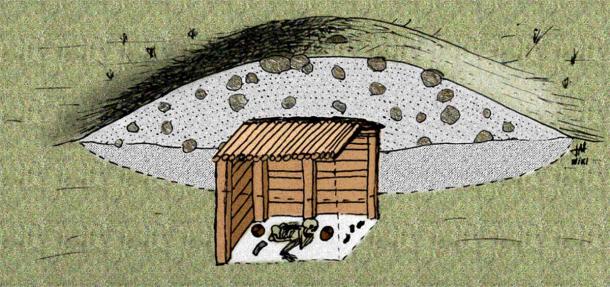
The recently discovered 2,000-year-old tomb in Siberia seems to have been a type of kurgan burial mound. The kurgan design above was common among several steppe cultures. ( Public Domain )
A Lost Culture Unlike Anything Known Before
The Tagars inhabited the basin from the late Bronze Age (8th century BC) until the end of the first millennium BC. At that time, for unknown reasons, the Tagars moved northwards to the area of the modern city of Krasnoyarsk. Vinogradov explained that the Tagars generally buried their dead in kurgans, individually, and that collective burials, like this one, occurred in the late phase of the culture.
Vinogradov says the Tesinian culture emerged from mixing between the Tagars and other populations coming from Central Asia during this time. Additionally, because of the artifacts and burial methods observed at this kurgan mound, the archaeologists insist that the final stage of the Tagar culture should “be classified as a separate culture.” Describing this lost culture, Vinogradov said it was “unique and different from anything we knew before”.
Top image: Collective burial pit excavated at Krasnoyarsk, Siberia. Source: Dimitry Vinogradov/ Haaretz
By Ashley Cowie
